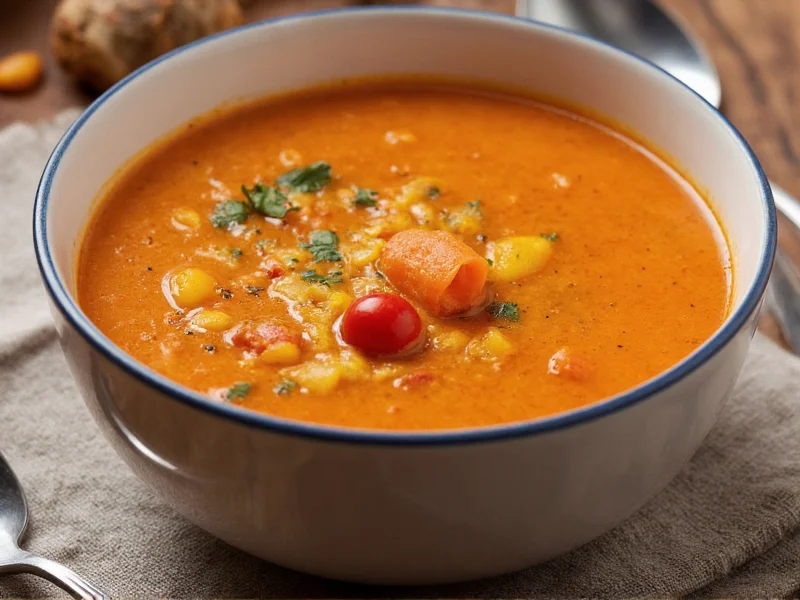Knorr has established itself as a trusted name in flavor enhancement since its founding in 1838 by German food merchant Carl Heinrich Knorr. The brand's soup products have evolved significantly from their original formulations while maintaining their core purpose: delivering consistent, restaurant-quality flavor with convenience. Today, Knorr soup offerings span multiple product categories that serve different culinary functions in the kitchen.
Understanding Knorr Soup Product Categories
Knorr's soup-related products fall into several distinct categories, each serving specific cooking purposes:
| Product Type | Primary Use | Preparation Method | Common Varieties |
|---|---|---|---|
| Dehydrated Soup Mixes | Complete soup preparations | Dissolve in boiling water | Vegetable, chicken noodle, tomato |
| Bouillon Cubes | Flavor base for cooking | Dissolve in liquid or crumble directly | Chicken, beef, vegetable, mushroom |
| Liquid Concentrates | Intense flavor enhancement | Add directly to dishes | Professional kitchen formulations |
| Recipe Mixes | Complete meal solutions | Combine with proteins and vegetables | Cream of mushroom, broccoli cheddar |
Practical Applications in Home Cooking
Understanding how to effectively incorporate Knorr soup products into your cooking repertoire transforms them from simple convenience items into versatile culinary tools. Professional chefs and experienced home cooks utilize these products in ways that maximize flavor while maintaining ingredient integrity.
When using Knorr vegetable soup base in recipes, consider these professional techniques:
- Use as a flavor foundation for risotto instead of plain water for enhanced depth
- Add to roasted vegetable pan drippings to create instant gravy
- Incorporate into meatloaf mixtures for moisture and flavor complexity
- Dissolve in pasta water to season noodles from within
- Use as a braising liquid for tougher cuts of meat
Many home cooks search for Knorr chicken bouillon cube substitutes when unavailable, but understanding the product's unique composition explains why direct substitutions often fall short. Knorr bouillon contains a precise balance of salt, hydrolyzed proteins, and flavor enhancers that create umami depth difficult to replicate with single ingredients. When substituting becomes necessary, combine 1 cup of homemade stock with 1 teaspoon of soy sauce and 1/4 teaspoon of nutritional yeast for closest approximation.
Nutritional Profile and Dietary Considerations
Examining the Knorr soup nutritional information reveals important considerations for health-conscious cooks. Most Knorr soup products contain moderate sodium levels necessary for flavor development, with a single serving (typically 1/2 cube or 1 teaspoon of base) containing 800-1000mg of sodium. Health-focused cooks can employ several strategies to enjoy Knorr soup products while managing sodium intake:
- Dilute with additional water or low-sodium broth
- Use only half the recommended amount and supplement with fresh herbs
- Balance with potassium-rich vegetables like tomatoes and spinach
- Choose reduced-sodium varieties when available
- Rinse canned beans before adding to soups to reduce overall sodium
For those following specific dietary protocols, Knorr offers several certified options including gluten-free formulations and products suitable for vegetarian and vegan diets. Always check current packaging for the most accurate dietary information as formulations occasionally change.
Advanced Cooking Techniques with Knorr Products
Mastering Knorr soup cooking tips for beginners elevates everyday cooking through professional techniques that maximize flavor potential while maintaining ingredient quality. Consider these advanced applications:
Building flavor layers: Start with Knorr vegetable base dissolved in minimal water to create a concentrated flavor foundation, then build additional layers with fresh aromatics and herbs. This technique prevents the "one-note" flavor that sometimes occurs when adding bouillon to finished dishes.
Texture enhancement: When making homemade soup with Knorr products, incorporate the base at multiple stages of cooking. Add half during the initial sauté phase to toast the flavors, then the remainder near the end to preserve volatile aromatic compounds that dissipate during prolonged cooking.
Flavor balancing: Knorr soup products naturally lean toward umami and salt profiles. Counterbalance with acid (lemon juice or vinegar) and sweetness (a pinch of sugar or caramelized onions) to create more complex, restaurant-quality results. This approach transforms simple Knorr vegetable soup recipe ideas into sophisticated culinary creations.
Storage and Shelf Life Considerations
Proper storage significantly extends the usability of Knorr soup products. Bouillon cubes maintain optimal flavor for 18-24 months when stored in airtight containers away from moisture. Powdered soup bases remain fresh for 12-18 months under similar conditions. For extended storage, consider freezing bouillon cubes in vacuum-sealed bags which prevents flavor transfer and moisture absorption.
When evaluating older products, check for these signs of deterioration:
- Color changes (particularly darkening in vegetable varieties)
- Clumping or hardening in powdered products
- Loss of aromatic intensity when opened
- Off-flavors when dissolved in hot water
While expired Knorr products rarely pose safety concerns, their flavor quality diminishes significantly after the recommended shelf life, affecting the final dish's taste profile.
Environmental and Sourcing Practices
Modern consumers increasingly consider sustainability when selecting pantry staples. Knorr has implemented several initiatives addressing environmental concerns, including sustainable herb sourcing programs and reduced packaging footprints. The brand's "Positive Taste" mission focuses on three pillars: healthier food, positive impact on the planet, and better livelihoods for farmers.
For cooks interested in ethical sourcing, Knorr offers products with various certifications including Rainforest Alliance, Non-GMO Project verification, and sustainably sourced ingredients. These options provide environmentally conscious cooks with pantry staples that align with their values without sacrificing flavor quality.











 浙公网安备
33010002000092号
浙公网安备
33010002000092号 浙B2-20120091-4
浙B2-20120091-4